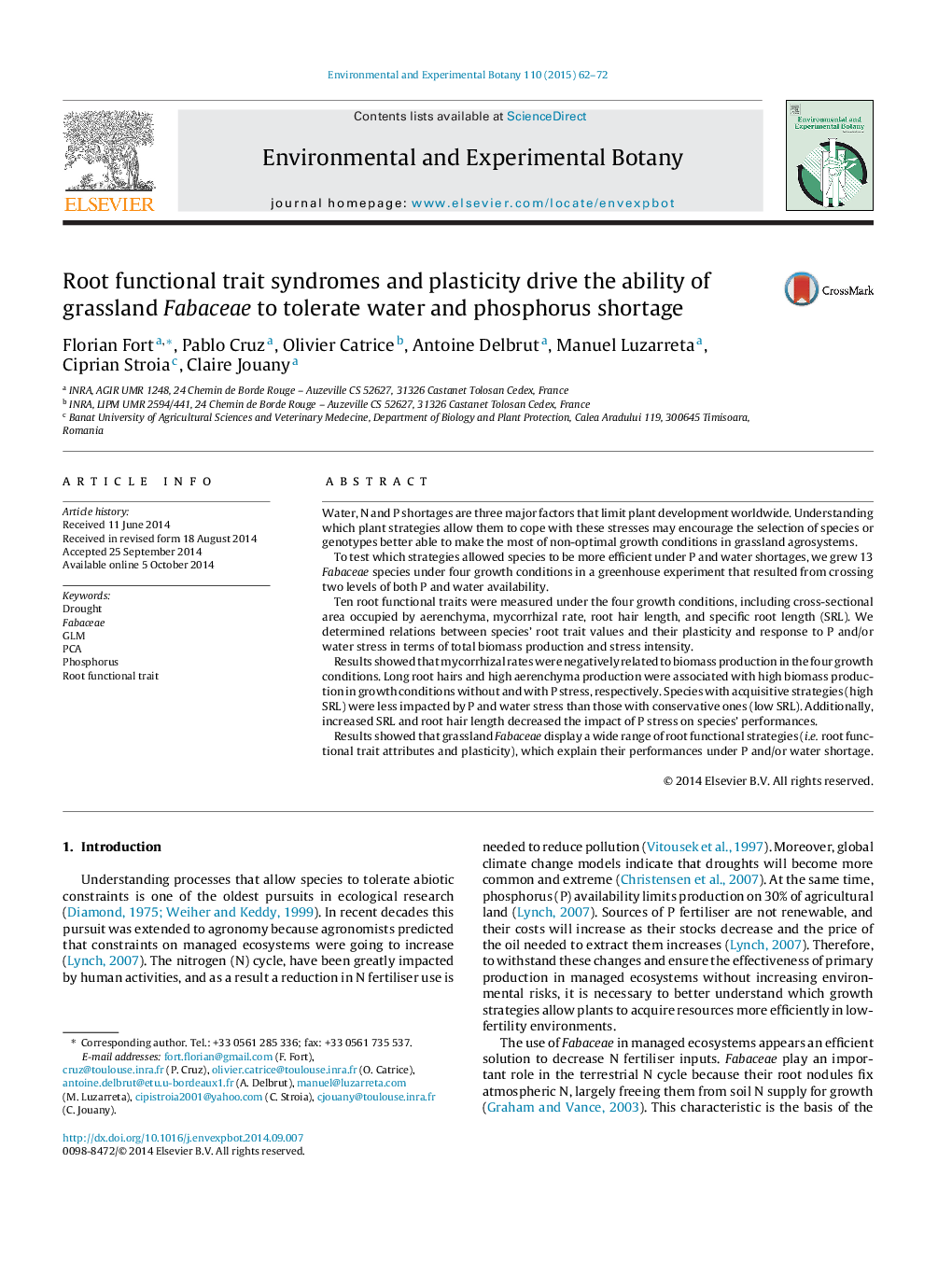| کد مقاله | کد نشریه | سال انتشار | مقاله انگلیسی | نسخه تمام متن |
|---|---|---|---|---|
| 4554294 | 1628067 | 2015 | 11 صفحه PDF | دانلود رایگان |
• We grew 13 Fabaceae species in a cross combination of P and water shortage.
• We study relations between root traits and species capacities to face shortages.
• Long root hairs were associated with high biomass production in optimal condition.
• Aerenchymas were associated with high biomass production in P shortage condition.
• Acquisitive species were less impacted by shortages than conservatives ones.
Water, N and P shortages are three major factors that limit plant development worldwide. Understanding which plant strategies allow them to cope with these stresses may encourage the selection of species or genotypes better able to make the most of non-optimal growth conditions in grassland agrosystems.To test which strategies allowed species to be more efficient under P and water shortages, we grew 13 Fabaceae species under four growth conditions in a greenhouse experiment that resulted from crossing two levels of both P and water availability.Ten root functional traits were measured under the four growth conditions, including cross-sectional area occupied by aerenchyma, mycorrhizal rate, root hair length, and specific root length (SRL). We determined relations between species’ root trait values and their plasticity and response to P and/or water stress in terms of total biomass production and stress intensity.Results showed that mycorrhizal rates were negatively related to biomass production in the four growth conditions. Long root hairs and high aerenchyma production were associated with high biomass production in growth conditions without and with P stress, respectively. Species with acquisitive strategies (high SRL) were less impacted by P and water stress than those with conservative ones (low SRL). Additionally, increased SRL and root hair length decreased the impact of P stress on species’ performances.Results showed that grassland Fabaceae display a wide range of root functional strategies (i.e. root functional trait attributes and plasticity), which explain their performances under P and/or water shortage.
Journal: Environmental and Experimental Botany - Volume 110, February 2015, Pages 62–72
